“Italia! oh Italia! thou who hast
Lord Byron, Childe Harold, Canto iv. Stanza 42
The fatal gift of beauty…”
I thought it appropriate to begin this article with a direct quote from its protagonist. It’s probably safe to assume a lot of us can relate to this sentiment of Lord Byron‘s when in Italy – after all, they don’t call it Il Belpaese for nothing. One of Britain’s greatest poets wrote some of his best work during his eight-year stay in the country. It would seem Italy was special to Lord Byron as much as Lord Byron was special to Italy.
If you’re a fan of Lord Byron, this article is for you. We will now, for a brief moment, step into his shoes and walk around the Italian peninsula, have affairs at palazzos, write memorable verses after a swim in a grotto, get interested in foreign languages while living with monks – to name a few adventures.
Picture of Lord Byron
Lord Byron was born George Gordon Byron in 1788. Between having an absent father and a mother who likely suffered from schizophrenia, he had quite an unhappy childhood. At the age of 10, he inherited the title of a Lord from an uncle who passed away. His youth was marked by a lack of discipline for studying, as well as gambling bouts and love affairs – but also his first dabs into poetry. Already then, his work was satirical, dark-humored, at times political. Lord Byron’s provocative behavior finally caught up with him in 1816. He was in debt, ridden with scandals, and under lynching threats. After spending that summer in Switzerland, where he met other writers including Percy Bysshe Shelley and Mary Shelley, Lord Byron settled in Italy.
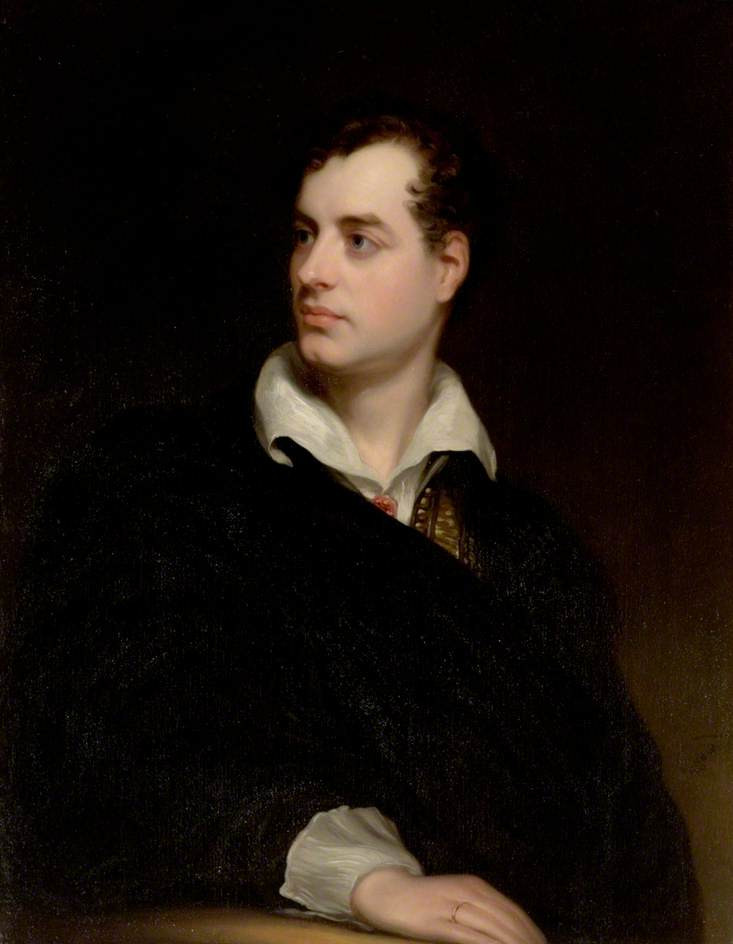
A journey to Italy
Venice, 1816-1819
What was meant to be a short stop on his European travels turned out to be a three-year stay. Lord Byron arrived in Venice in 1816 to stay with a friend, a woman named Marianna Segati in Calle della Piscina. The poet, to nobody’s surprise, fell in love with his host, but quickly replaced her with a Margarita Cogni, who moved in with him. It was around this time that you could see Lord Byron sleep in a gondola after fighting with his beau.
As he lived so close to Piazza San Marco, he often went there; more specifically at the famous Caffé Florian. The place was famous for being the meeting spot for writers like Charles Dickens, Carlo Goldoni, and Wolfgang Goethe. The café is still there, so make sure to stop by when in Venice!
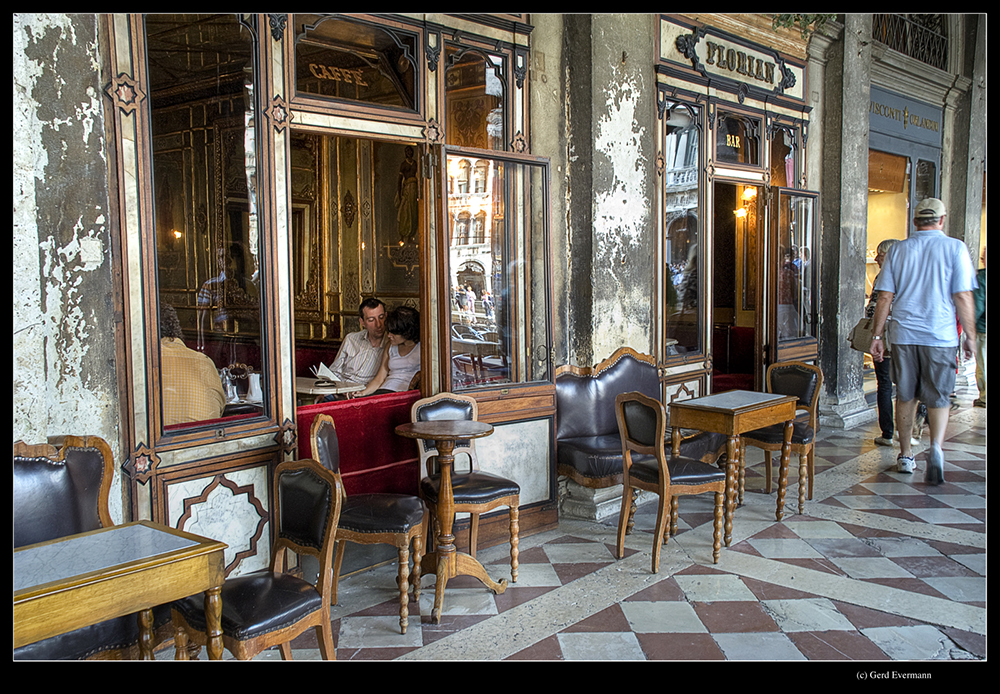
Lord Byron’s life in Venice was… eccentric. His writings became influenced by his surroundings, as seen in “Beppo”, which was about the Venetian carnival. He bragged about sleeping with countless courtesans of Venice and often took a swim between Venice and the island of Lido, where he frequently visited the Jewish cemetery. He also took interest in Italian writers and poets, which also helped him improve his language skills.
In 1816, Lord Byron visited the island of San Lazzaro degli Armeni, which to this day hosts the monastery of the Mekhitarists, an Armenian Catholic congregation. There, he got immersed in the Armenian culture and language while living among the monks, so much so that in 1821 he helped to compile the “English Armenian Dictionary.” In the small museum on the island, you can find a room dedicated to Lord Byron in memory of his dedication, containing his books and biographical texts.
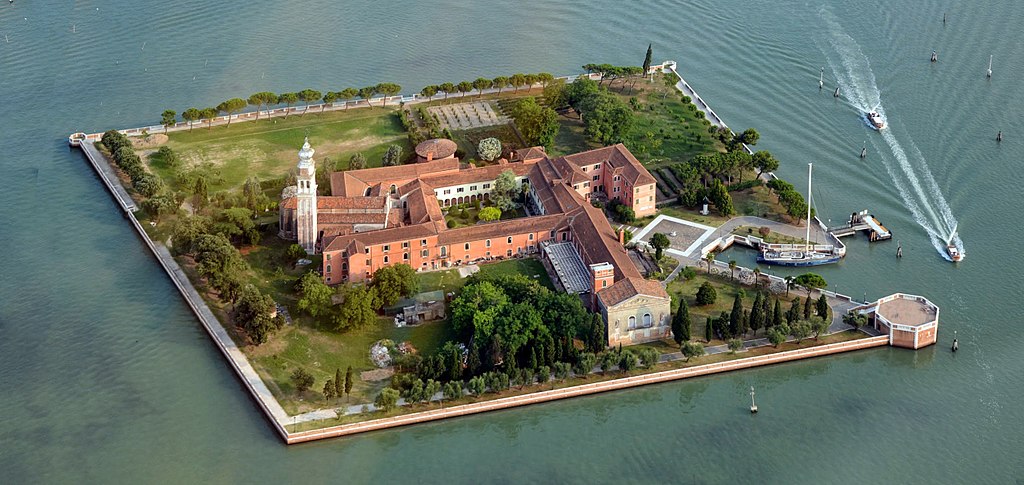
Until 1919, Lord Byron lived on the Grand Canal no less, at the Palazzo Mocenigo. We hear that he had 14 servants, two monkeys, two mastiff dogs, and a fox there. It is also where the first verses of “Don Juan” came to be.
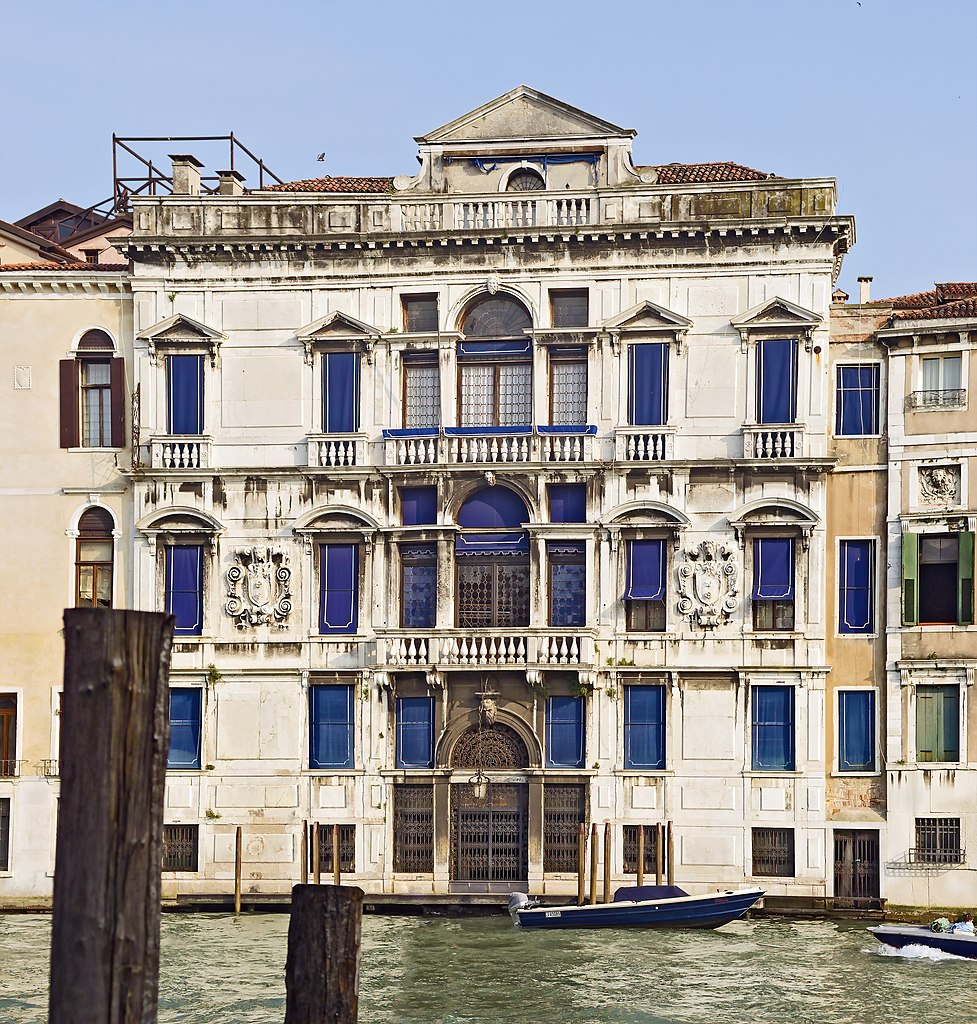
A little further up along the Grand Canal lies Palazzo Querini Benzon. There, Lord Byron met his last love, Teresa Gamba Guiccioli, with whom he then moved to Ravenna.
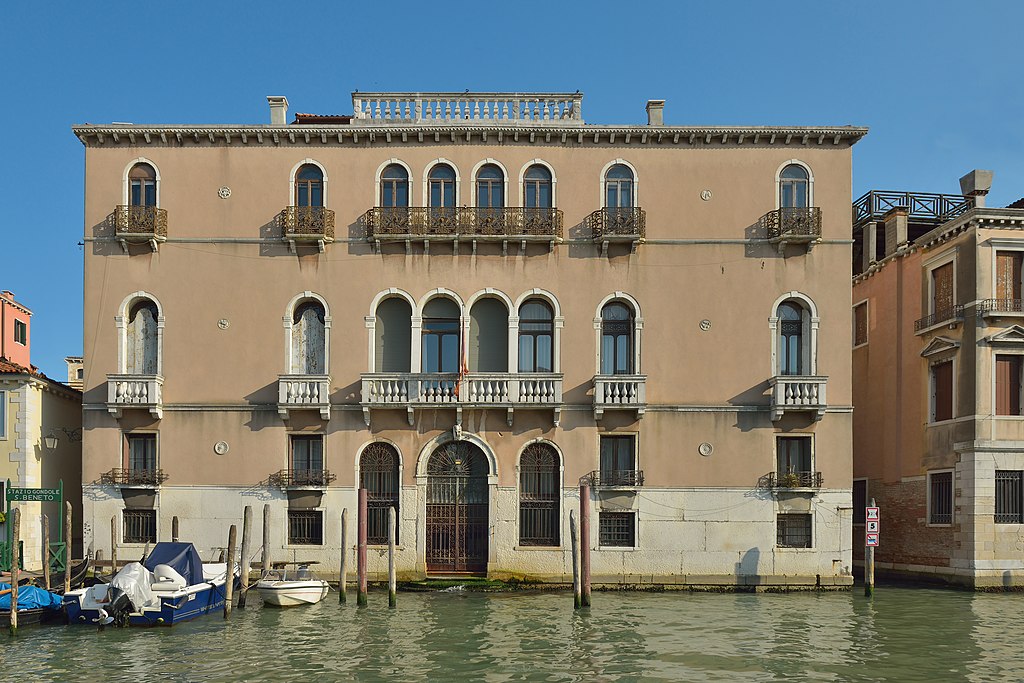
Last but not least, the Ponte dei Sospiri, the Bridge of Sighs, named so by Lord Byron himself. Apparently the poet was quite fascinated by this bridge, which connects the Palazzo Ducale (the Doge’s palace) with the prison across the canal. It is the sighs that the condemned would release upon seeing Venice, and their freedom, for the last time.
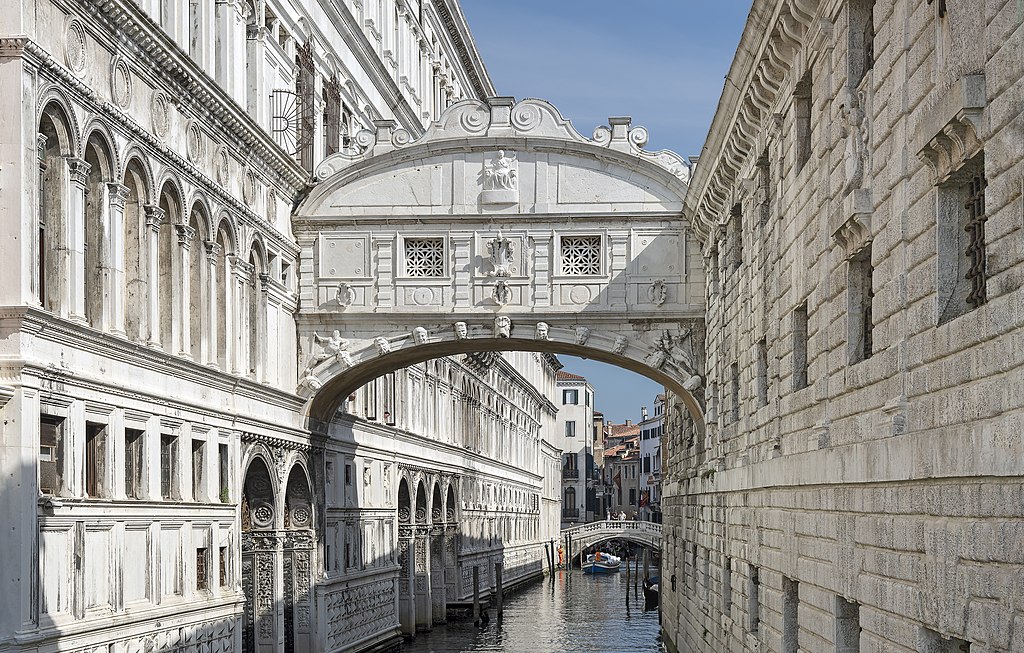
I stood in Venice, on the Bridge of Sighs,
Lord Byron, I stood in Venice, from Childe Harold’s Pilgrimage
A palace and a prison on each hand:
I saw from out the wave her structures rise
As from the stroke of the enchanter’s wand:
A thousand years their cloudy wings expand
Around me, and a dying Glory smiles
O’er the far times, when many a subject land
Looked to the wingéd Lion’s marble piles,
Where Venice sate in state, throned on her hundred isles!
Ravenna
Between 1819 and 1821, Lord Byron moved into the apartment of his mistress’ husband, Count Alessandro Guiccioli. At Palazzo Guiccioli, the city of Ravenna is planning to open a museum dedicated to the poet in the coming years. In Piazza San Francesco, you can find a plaque in honor of Lord Byron’s time in the town.
Percy Shelley, who visited Lord Byron there frequently, describes his life in a letter. They walked through the historical pine forests “which divide Ravenna from the sea.” According to Shelley, Lord Byron owned “ten horses, eight enormous dogs, three monkeys, five cats, an eagle, a crow, and a falcon; and all these, except the horses, walk about the house, which every now and then resounds with their unarbitrated quarrels, as if they were the masters of it…”
Lord Byron also got acquainted with the secret Carbonari revolutionary society, thanks to his lover’s brothers. The movement’s activities included plotting insurrection against the Austrian rulers. By this point, the locals in Ravenna already referred to the poet as “the mad Englishman.” As luck would want, he fell out of favors in the town and had to flee in 1821.
Pisa and Livorno
During his stay in Pisa, Lord Byron resided in Palazzo Toscanelli, now Palazzo Lanfranchi-Toscanelli. He started hosting dinner parties, attended by Percy Shelley, of course, but also Edward Williams, Thomas Medwin, Edward John Trelawny, Leigh Hunt and John Taaffe. After a fight which brought him under the eye of the police in Pisa, the poet moved to the outskirts of Livorno and the town of Montenero, staying in Villa Dupouy. His six-week stay resulted in a dispute with Teresa’s brothers, who were forced to leave Tuscany while Lord Byron left for Albaro, a town near Genoa.
But during his stay here, Byron and Williams rented a house on the coast and the poet became interested in boats. Byron even had his own yacht, named the Bolivar. He enjoyed swimming, as we recall from his time in Venice. He would do the same in the Porto Venere bay in La Spezia, now aptly named The Bay of Poets. There, you can also find Byron’s own grotta, named Grotta Byron or Grotta Arpaia, where he meditated and drew inspiration for his work.
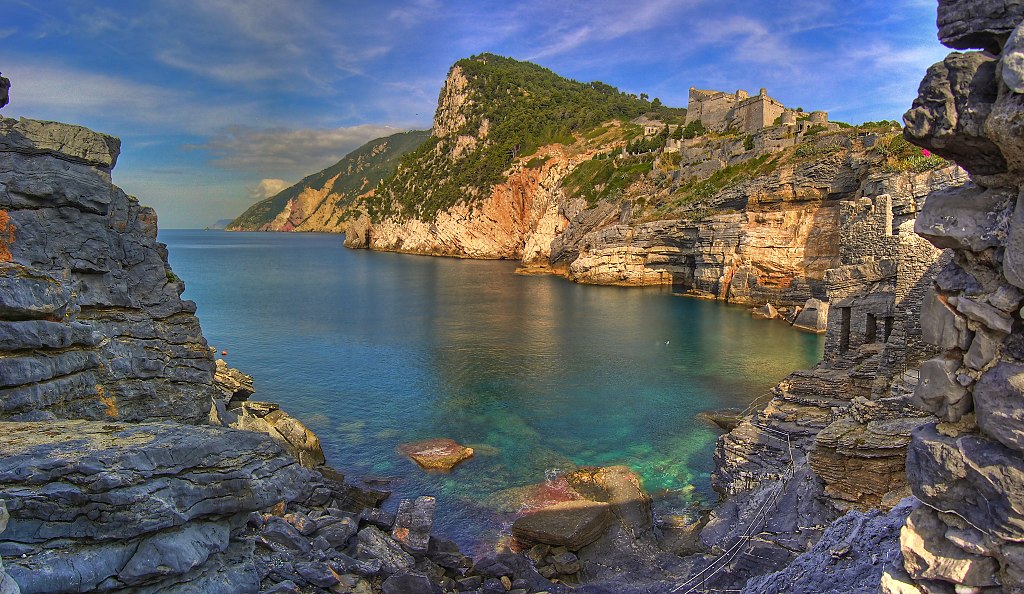
Although the grotto collapsed, you can still find a plaque honoring Byron’s courage and strength in tackling the often tempestuous waters. If you find yourself in the area during August, there will be the Byron Cup swimming challenge, commemorating Lord Byron’s legendary 7.5 km swim between Porto Venere and Lerici. The bay, however, also brought the death of Percy Shelley in 1822, in a boating accident.
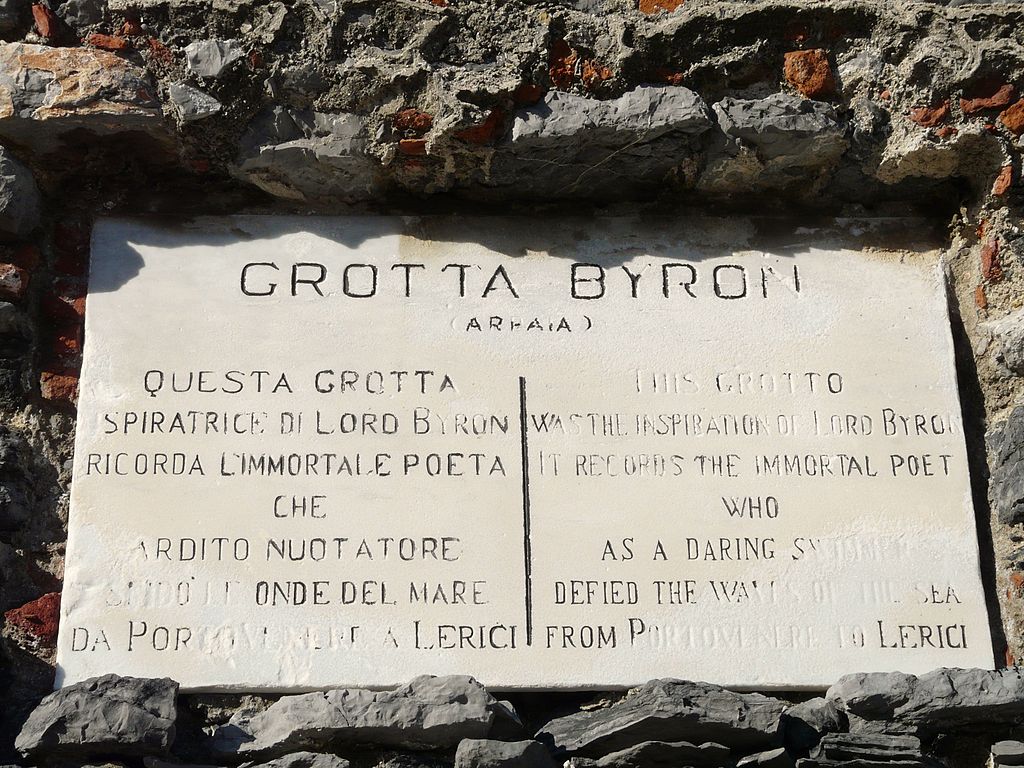
Genoa
Together with Percy’s widow Mary and poet Leigh Hunt, Lord Byron moved to his final Italian destination, Genoa. He stayed in Villa Saluzzo, or Villa Saluzzo Bombrini, located on a hill in the Albaro district, where another plaque now bears his name. At this time, the poet found himself at the height of his fame, yet unfulfilled in his personal life. He wanted to join a revolution somewhere, possibly South America or Ireland, that would “make him feel alive”, as he wrote to Mary. And so, in 1823, he traveled to Greece to join the independence movement from the Ottoman Empire. Lord Byron then died there in 1824, after falling ill.
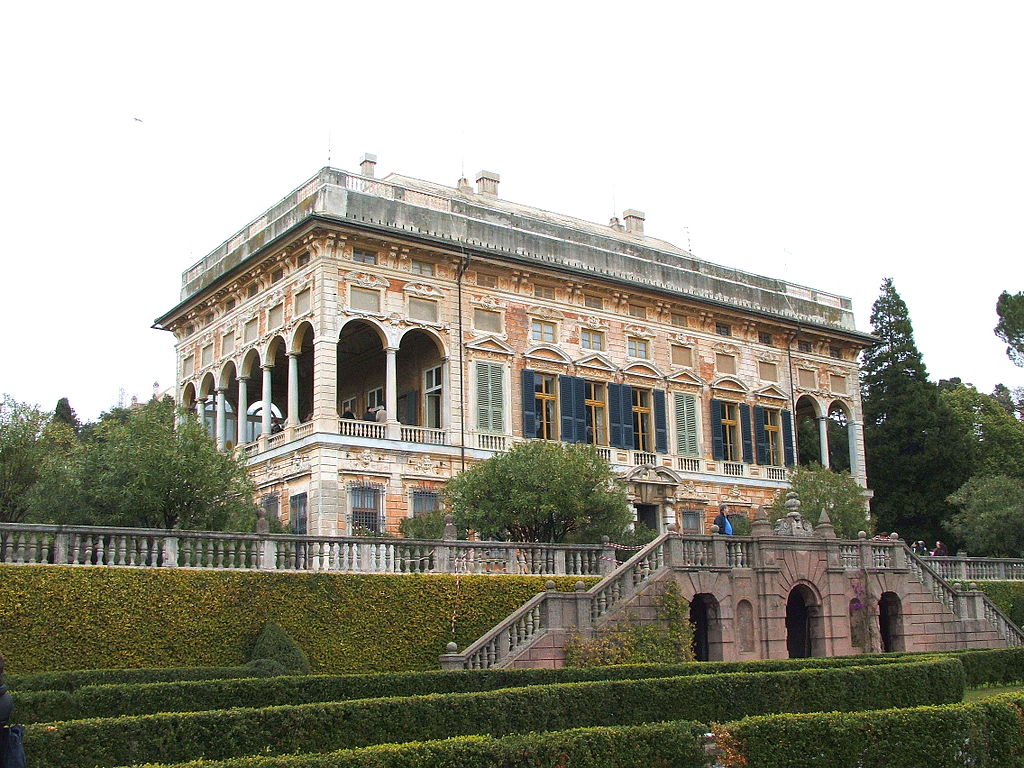
Lord Byron’s relationship with Italy appears to be a love one. The poet seemed thoroughly enamoured of it. As briefly mentioned earlier, he learned Italian – so fluently, in fact, that he could have almost passed as an Italian poet. He adopted the “ottava rima”, translated Dante, dramatized the Venetian history, joined political movements like the one in Ravenna. Lord Byron changed the way the Brits think of Italy and brought the countries closer together. And in 2024, two centuries after his death, we can probably expect a joint commemoration of this great Romantic poet.


This was a wonderful account of Lord Byron’s tenure in Italy. He undoubtedly brought his magic with him wherever he ventured. This chapter of Lord Byron’s life was chronicled and chaptered with an artistic flair by the author. It is arguably, the best account of Byron s life in Italy, that I’ve had the good fortune to read.
Hi Bruce! So glad that you enjoyed reading the article. We were very inspired by this chat!
Excellent, synthetic yet full account of Byron’s time in Italy, really clear and well structured.
Dear Mike, thank you for discovering Live in Italy Magazine and enjoying the interview with Tess.